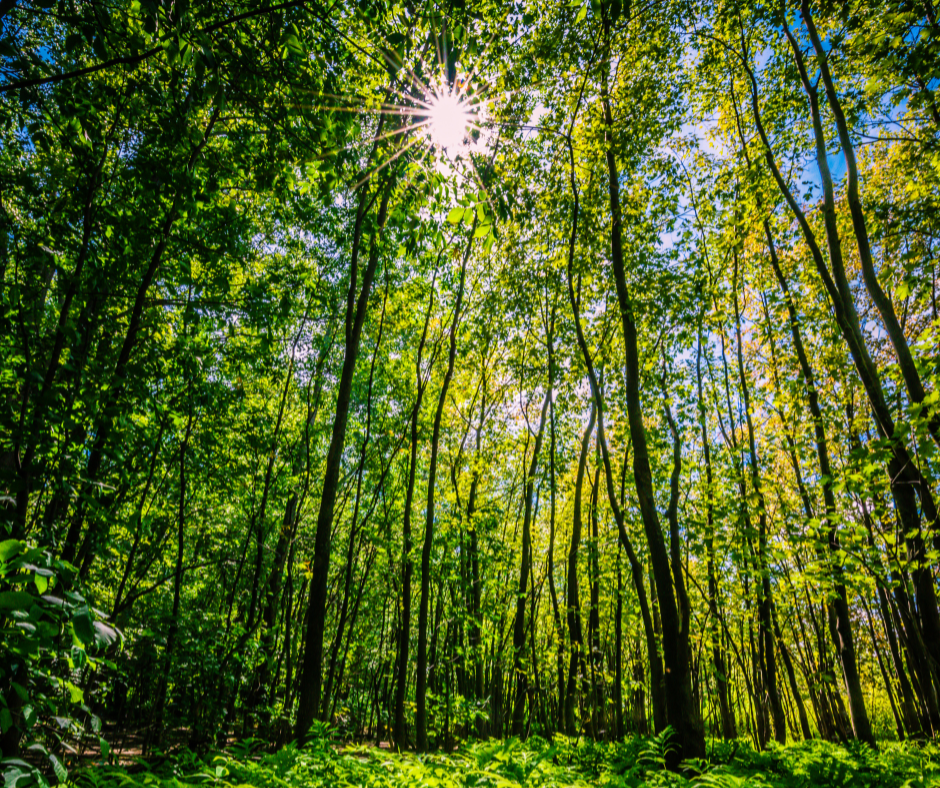Why is my Grass Thin Under my Trees?

There is a reason why park benches are placed under trees! If two benches were available to sit on after you completed your 3-mile morning walk on a beautiful sunny day, you are dripping with sweat and chugging that 64 oz water bottle like you just came out of a sauna; one bench full sun and the other is under a tree. You are always going to pick the one under the tree. Why?…….SHADE!
Shade

What else happens in shade? Not photosynthesis that’s for sure. Photosynthesis is the process any plant has to go through in order to create sugars in which it then uses to function and grow. Grasses growing under a tree are experiencing a limited photosynthetic process, this inhibits the plants’ growth rate and recuperative capabilities to the extent that it is generating less sugars than it needs to survive on a daily basis. Eventually, if running on a continual deficit, the grasses will die! They tend to need 8+ hours of sunlight daily. Some varieties have been artificially developed to cope with less but even if they can they still have to battle compete with water and nutrients with the roots of the tree!
Tree Drip Line
Tree roots generally do not extend too far past the drip line of the tree. If anything is directly under the tree in this drip line zone, it is directly competing for water and nutrients. The chances of having a successfully growing plant under most trees is limited to plants/grasses that can handle restricted sunlight hours that also have a lower water and nutrient requirement. The reason shade plants have a larger leaf, thicker cuticle and grow slower is because of all the restrictions through competition. Maybe plants have found a niche but to date no grasses can survive long term under such restrictions.

Now you may have a situation where shade is your only issue. In this instance I would recommend you investigate grass varieties that are “shade tolerant” but remember they will have a reduced fertilizer requirement. Overfertilizing may then lead to disease and excessive weak growth. When this is coupled with a lack of chlorophyl production you will end up with a grass plant that has low vigor, color quality and recuperative capacity. Any disease or traffic incidents under these circumstances will have a greater impact and you will be struggling to have any sort of quality turf.
Solutions

The easiest one and I’m sure you’ve already guessed it; don’t try to grow grass under it! Try to come up with another way make the area aesthetically pleasing. Edge the area, make a shade bed, put Hostas, Irises, other shade plants and maybe even a bench in there that will help elevate the overall look of the area.
Thinning out the canopy of the tree would be another option. Try to get sunlight to hit the ground through the tree canopy. Morning sun is not as important as midday and afternoon sun (sunlight intensity and wavelength), so record when and for how long sunlight is restricted. Remove sections of the tree that will ensure sunlight from mid-morning and on.

Artificial grow lights should be considered. These are used all the time in the sports turf industry and also in the recreation industry 😉 But seriously, run some electrical wire or attach solar panels to grow lights and light up the area for however long it is currently being deficient for. I have always done this during night hours and put lights on a timer. Make sure to supply enough lumens otherwise you will be wasting your money.
Lastly, and I only recommend this under a few circumstances, is to remove the tree. I would only do this if there was a direct functional safety issue with the tree or if it was adversely affecting the structural integrity of things close by. Anyway, this solution is permanent and is the only one that will allow you to grow a nice lawn uninhibited.

